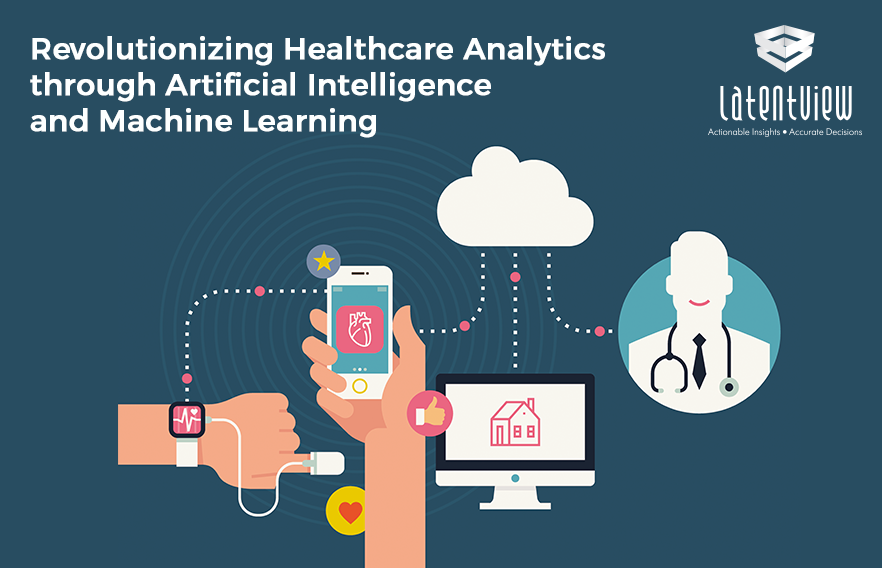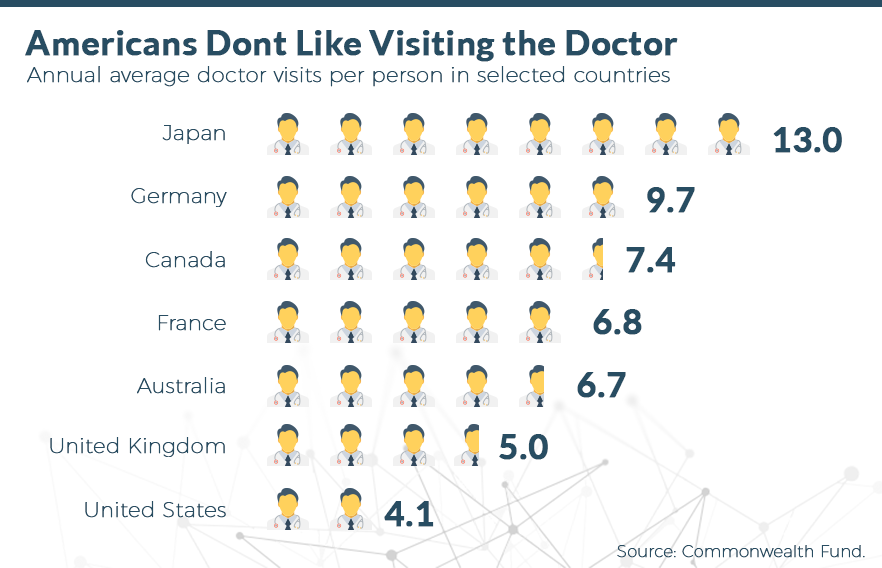According to a recent study conducted by Forbes magazine, Americans visit the doctor on an average of four times a year. While a long wait to schedule an appointment is one of the reasons that discourages patients from visiting a hospital, the cost of healthcare also acts as a major deterrent to people to seek the medical help they need.
A good healthcare system not only contributes to the welfare of the citizens, but also boosts the economy by making sure that productive labor is not lost due to down time. With rapid strides in technology, it is not surprising that the healthcare industry collects a lot of data about patients and this has the potential to generate valuable insights for medical practitioners and even when it comes to medical research. Big data and healthcare analytics have changed the face of the industry from a traditional set-up to one that thrives and is driven by technology.
Most hospitals already have several years of data. What they don’t realize is that their data is actually an asset that can be used to generate data models and benefit across clinical, operational, and revenue cycle processes. In addition, the right people, processes and technology, along with both short-term and long-term strategies are critical components of any effort to leverage data. A patient’s data not only helps us understand their medical history, but also helps us predict the complications a patient can face and their possibility of readmission. This in turn translates to better health outcomes for the patients; it could also make a difference in improving reimbursements and regulatory compliance.
Use of Machine Learning (ML) in medicine
Traditional drug discovery system requires nearly 12-15 years of trial and research, which causes delay in the final delivery of the drug. This delay can be minimized by using existing research data combined with machine learning algorithms. Machine learning in healthcare can boost pharmaceutical research in the following ways:
- Using clinical data and molecular research, predictive modelling can help in understanding potential-candidate molecules that have the high probability of being successfully developed into drugs
- Using predictive modelling helps eliminate the overall cost and time required for trial and monitor processes usually seen in drug discovery
- Monitoring live data from patients and feeding it directly into the system helps the model to adapt to the ever-changing patient’s medical history
Leveraging data for efficient diagnostics
Artificially intelligent algorithms are being used extensively for skin cancer diagnosis. Scientists at Stanford University have created algorithms that can visually diagnose a potential cancer cell using a database of nearly 130,000 skin disease images. Below are some the major players in disease diagnostics:
- IBM Watson Genomics is making strides in precision medicine by integrating cognitive computing and genomic tumor sequencing
- Google’s DeepMind health is developing a technology to address macular degeneration in aging eyes
- Boston-based biopharma company Berg is using AI in healthcare to research and develop diagnostics and therapeutic treatments in multiple areas, including oncology
- In the area of brain-based diseases like depression, Oxford’s P1vital® Predicting Response to Depression Treatment (PReDicT) project is using predictive analytics to help diagnose and provide treatment, with the overall goal of producing a commercially-available emotional test battery for use in clinical settings
Treatment Using Technology
Telemedicine has been present on the healthcare services market for over 40 years. However, with the arrival of improved online video conferences, smartphones, wireless devices, and wearables, it has been leapfrogged into a reliable service for remotely treating patients. In many ways, telemedicine and AI are a match made in healthcare heaven. They are both aimed at cutting costs and diagnosing illnesses faster and more accurately. Some of its benefits are:
- Aiding more precise diagnoses: Clinicians can already diagnose, monitor, and treat diabetic retinopathy remotely via telemedicine. In fact, the Los Angeles County Department of Health Services recently reduced visits to specialty care professionals by more than 14,000 by implementing telemedicine screenings for diabetic retinopathy at its safety net clinics
- Pattern recognition for treatments: Infusing telemedicine platforms with machine learning algorithms such as IBM Watson will mean better diagnoses with less human effort. For example, an algorithm should track every treatment for strep throat and then ask patients how long it took them to get better on average. The platform could then adapt and recommend treatments based on past success rates
- Resolving logistical challenges: AI in healthcare can also be used to reduce long hospital wait times and other administrative headaches. For example, AI will be able to route questions to the doctor with the best outcomes for a patient’s symptoms instead of just sending them to the first doctor available.
Optimizing duty allocation
The most common problem encountered in the healthcare space today is staffing. What is the optimal number of staff to be put on duty at any given time? Too many staff on duty will result in increased costs. Too few may result in a risk that the customer service will become down and patient care is compromised. Predicting the adequate number of staff required based on analytics during peak and lean time can bring in greater efficiency.
Big data analytics in healthcare is helping to solve this problem at least at a few hospitals in Paris. Four hospitals that are part of the Assistance Publique-Hôpitaux de Paris have used data from internal and external sources, which includes a 10 years’ history of hospital admission records to develop a prediction model. The model predicted approximately how many patients are expected to be at each hospital at a given time with an accuracy of 80 to 90 percent on a day-to-day basis. The core of the analytics involves using time series forecasting techniques – looking for ways in which patterns in data can be used to predict the admission rates at different times. Once we have identified the techniques we can implement machine learning in healthcare for predicting which algorithm is best suited to predict future admission trends.
Whether organizations realize it or not, making analytics a critical component of their go-forward strategy creates a significant competitive advantage. Look at purely digital industries such as Amazon and Google. They use data analytics across the full spectrum of their businesses to understand their buyers, and to engage them in a meaningful way. The result is improved customer engagement and increased efficiencies, both of which positively impact their bottom line.
While healthcare is coming from a different place, the need for advanced healthcare analytics is just as critical. Those organizations that do not embrace this fact or act on it will not survive against those that do. The winners will figure out how to use data analytics to improve efficiencies across their entire organization to be more thoughtful, more proactive, and more efficient with resources.
Leveraging AI & ML to transform Healthcare
LatentView Analytics is working with companies across the healthcare industry to harness the power of AI & ML to transform their business processes, drive innovation and enhance customer experience. To know how LatentView Analytics can help you plan for AI and leverage its potential within your business, please get in touch with us at: marketing@latentview.com




